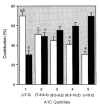Importance of Postprandial Glucose in Relation to A1C and Cardiovascular Disease
- PMID: 31371856
- PMCID: PMC6640888
- DOI: 10.2337/cd18-0040
Importance of Postprandial Glucose in Relation to A1C and Cardiovascular Disease
Abstract
IN BRIEF This article reviews the evidence regarding the impact of postprandial glucose (PPG) on overall A1C and its relation to cardiovascular disease (CVD). To date, four randomized, controlled trials have evaluated the impact of PPG reduction on CVD; however, only one of these successfully demonstrated a positive effect. Despite this, epidemiological evidence does indicate a cardiovascular benefit of PPG reduction, and agents that can be used to manage PPG in people with type 2 diabetes are also discussed.
Figures

References
-
- Madsbad S. Impact of postprandial glucose control on diabetes-related complications: how is the evidence evolving? J Diabetes Complications 2016;30:374–385 - PubMed
-
- Båvenholm PN, Efendic S. Postprandial hyperglycaemia and vascular damage: the benefits of acarbose. Diab Vasc Dis Res 2006;3:72–79 - PubMed
-
- Blevins T. Control of postprandial glucose levels with insulin in type 2 diabetes. Postgrad Med 2011;123:135–147 - PubMed
-
- Fysekidis M, Cosson E, Banu I, Duteil R, Cyrille C, Valensi P. Increased glycemic variability and decrease of the postprandial glucose contribution to HbA1c in obese subjects across the glycemic continuum from normal glycemia to first time diagnosed diabetes. Metabolism 2014;63:1553–1561 - PubMed
-
- American Diabetes Association 6. Glycemic Targets: Standards of Medical Care in Diabetes—2019. Diabetes Care 2019;42(Suppl. 1):S61–S70 - PubMed

